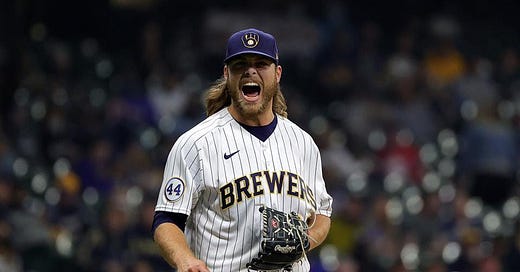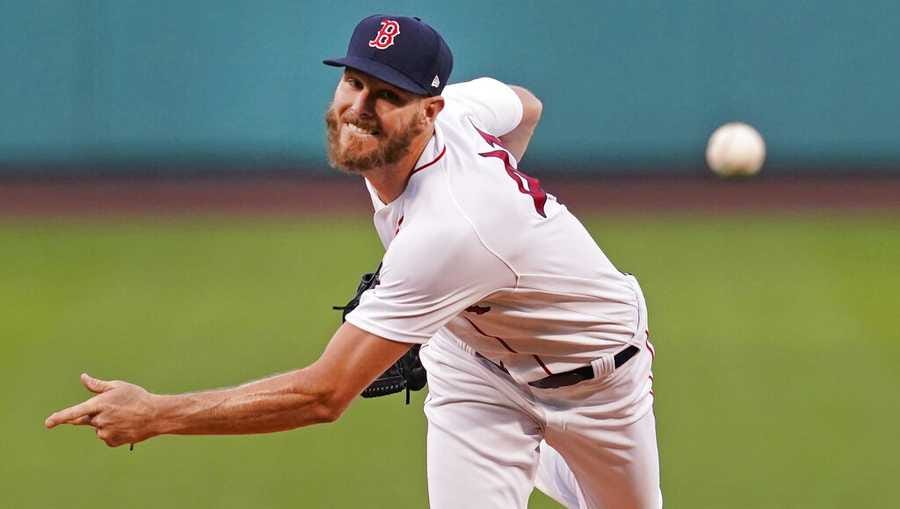The real reason the Red Sox chose this path with the rotation
Many are confused about how the Red Sox built the starting rotation. But if you dig deeper, it makes perfect sense.
When I think of the Chaim Bloom-era in Boston, I think of one keyword; flexibility.
Flexibility on defense to have as many options as possible, both in the lineup card and in the offseason. Flexibility on the pitching staff to keep arms fresh. Flexibility in the books to keep the Red Sox in on every player, every year.
So when people ask why the Red Sox are content to let Nathan Eovaldi, Michael Wacha, and Rich Hill depart, while only bringing in Corey Kluber, it’s fitting that the one word that explains their reasoning is ‘flexibility.’
While this exact path may not have been the front office’s plan A, the concept wouldn’t have changed if they had lured in Zach Eflin or Andrew Heaney on shorter-term deals, instead of signing Corey Kluber to his one-year deal that includes a team option for a second. This concept, on the surface, leaves much to be desired. But if you dig deeper, it makes perfect sense.
In 2022, the Red Sox lacked rotation depth. Their over-reliance on smooth recoveries from Chris Sale and James Paxton left them too dependent on their minor league depth. Josh Winckowski, Kutter Crawford, Brayan Bello, Connor Seabold, and Austin Davis combined to start 45 of 162 games. 28% of Red Sox games in 2022 were started by AAA pitchers or relievers. This year, with seven MLB-caliber starting pitchers projected to be on the MLB roster, the Red Sox hope to be less reliant on their minor league depth.
But just because the Red Sox are trying to be less reliant on their depth doesn’t mean there isn’t any. At the start of the recent offseason, the Red Sox added Bryan Mata, Brandon Walter, and Chris Murphy to the 40-man roster. Those three, along with Josh Winckowski and Kutter Crawford, could fill the Worcester rotation to start the season.
Winckowski and Crawford are coming off seasons in which they each showed flashes of big-league effectiveness, with several speedbumps along the way.
Mata has electric stuff, and the only thing holding him back from being a sure-fire big-league starter is his command. He had a 5.0 BB/9 last season, and will continue working with the staff to locate his pitches more consistently. 2023 will be a big year for Mata, as it could solidify whether his future is as a starter or a reliever.
Walter has mid-rotation potential, and the Red Sox are very high on him. Other teams have been after Walter in the past, but the Red Sox have repeatedly been unwilling to part with him, according to WEEI’s Rob Bradford. Walter spent much of the 2022 season shelved with a neck injury, but he’s somebody to keep an eye on in Worcester this year as he tries to make the leap to the big-league roster at some point.
Murphy is more likely a multi-inning relief arm, but he has a shot to be a back-end starter at some point if things break right. He is going to need to miss more bats to hit his ceiling, but he’s yet another arm that could see big league innings in Boston this season.
All five of those pitchers had scoreless spring debuts for the Red Sox in recent days, and all looked good doing it. Confidence in those arms (in addition to the young starters they have in the majors), and the willingness to give one or more of them an opportunity certainly contributed to the front office limiting their additions to just one starting pitcher from outside the organization.
But enough about depth. Let’s look forward a bit to the meat on this bone. Let’s look beyond this season, and even beyond next season. After the 2023 season, Corey Kluber (if the Red Sox decline his option) and James Paxton will be free agents. After 2024, Chris Sale and Nick Pivetta will be free agents. The Red Sox have seven starters right now, yet they’ve maintained a significant level of flexibility in the rotation, with each starter either being on a deal expiring in the next couple of years or on a rookie/inexpensive contract in Bello, Whitlock, and Houck’s case.
Maintaining that amount of rotation flexibility is something the Red Sox emphasized this year, and it may be due to two unprecedented upcoming free-agent starting pitching classes.
After the 2023 season, Shohei Ohtani, Aaron Nola, Max Scherzer (player option), Julio Urias, Lucas Giolito, Jack Flaherty, Luis Severino, Blake Snell, Sonny Gray, Tyler Mahle, Jordan Montgomery, and Frankie Montas are set to become free agents.
After the 2024 season, Corbin Burnes, Shane Bieber, Tyler Glasnow, Walker Buehler, Brandon Woodruff, Max Fried, Zack Wheeler, and Pablo Lopez are set to become free agents.

Of course, not all of these pitchers will make it to free agency. Some will sign extensions. But it’s entirely possible that the Red Sox avoided signing expensive deals with starters this off-season because they have their sights set on signing (or trading for) one of the several ace-caliber pitchers with uncertain futures with their current teams.
In fact, there’s a world where the Red Sox could sign and/or trade for two of the arms that become available. That’s not something they would be able to do if they had settled and signed pitchers in the previous free agent class to long-term deals, as the Cubs did with Jameson Taillon and the Phillies did with Taijuan Walker.
To think of the Red Sox rotation just as it pertains to 2023 is shortsighted. You can’t fully understand their situation unless you look down the road a bit and realize that it’s all part of the plan to force this team into sustainable championship contention for years to come.
For now, the Red Sox are giving real opportunities to their exciting young trio of pitchers in Brayan Bello, Garrett Whitlock, and Tanner Houck, who could each prove to be inexpensive rotation anchors moving forward.

If things break the right way, the Red Sox will be able to afford to supplement their talented rotation base with an ace like Aaron Nola or Corbin Burnes in the coming years. Just in time for the minor league core they’ve built to start knocking down the door to the big leagues, effectively forcing the Red Sox championship window wide open for the foreseeable future.
Follow Gordo on Twitter @BOSSportsGordo.
For additional Red Sox, Bruins, Patriots, MLB and NFL content follow Beyond the Monster on Twitter @BeyondtheMnstr.








